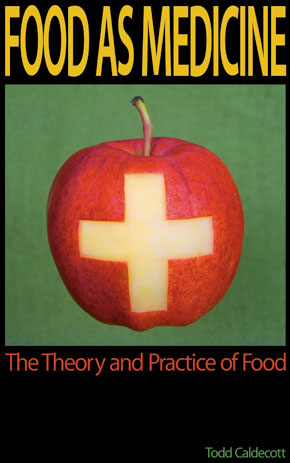A degenerative state is any state in the body that is characterized by a loss of tissue integrity, loss of function, atrophy, wasting and weight loss. In Ayurveda, the degenerative elements of disease are correlated with vata dosha, consisting of cold, dry, light, unstable and erratic qualities. A vata-reducing diet is predominant in sweet, sour and salty flavors, expressing the qualities of hot, wet and heavy, to keep the cold, dry and light qualities of vata in check. Included as well are lifestyle measures to reduce vata.
Foods to emphasize
- Fruits: most local seasonal fruits, in moderation (1-2 servings/d), e.g. fresh fruit with herbs and spices (e.g. chat masala); baked fresh fruits (e.g. apples, pears) and cooked dried fruits (e.g. prunes, figs, raisins etc.); very small amounts of tropical fruits including mango, papaya, pineapple, banana, sweet orange
- Vegetables: all cooked vegetables, especially root vegetables and squash, preferably steamed, boiled or baked; well-cooked onions and garlic; leafy green vegetables prepared with spicy herbs and fat
- Grains and cereals (if not otherwise contraindicated by allergy/sensitivity): refined cereals, e.g. basmati rice, jasmine rice; lacto-fermented whole cereals such as brown rice, quinoa, amaranth, khus khus, whole wheat, oats, whole wheat chapati; nixtamalized corn (e.g. tortilla)
- Legumes (if not otherwise contraindicated by allergy/sensitivity): washed legumes, e.g. mung dal, toor dal, chana dal; fermented whole legumes, e.g. adzuki, mung, tempeh, miso; soft tofu; consumed in small amounts, cooked well with herbs such as ginger and garlic and consumed with warm broth
- Nuts and seeds (if not otherwise contraindicated by allergy/sensitivity): most nuts and seed in moderation (no more than a small handful per person), including sesame, almonds, pumpkin, walnut, cashew, sunflower, coconut, pecan, filbert, brazil, hemp; nuts should be soaked in boiled water (allowed to cool for several hours), or cooked with food, to become softer and easier to chew
- Dairy (if not otherwise contraindicated by allergy/sensitivity): butter, ghee, fresh yogurt, full fat cream, eggs
- Meat and animals products: most animal products, including chicken, beef, pork, goat, lamb, fatty fish, buffalo, ostrich, wild game; prepared by braising (e.g. soups and stews)
- Oils and fats: most oils and fats, including olive oil, butter, tallow, lard, ghee, coconut oil, sesame oil
- Spices and condiments: most spices in moderation, including ginger, cardamom, mint, hing, cumin, coriander, cinnamon, garlic, pink salt, basil, rosemary, oregano, tamari, five-spice, black bean, nutritional yeast, apple cider vinegar
- Beverages: warm water, herbal teas that have a sweet, warming and spicy flavor (e.g. licorice, cinnamon and ginger), fresh vegetable juices, almond milk; small amounts of wine, dark beer
- Sweeteners: small amounts of fresh honey, maple syrup, jaggery, molasses
Foods to Avoid
- Fruits: dried fruit (uncooked); bitter-tasting fruits such as cranberry, lemon, lime; unripe fruits
- Vegetables: raw vegetables
- Grains and cereals: granola, muesli, corn, millet, bread, popcorn, rice cakes, potato
- Legumes: most legumes should be avoided, especially too much and too frequently
- Nuts and seeds: salted/prepared nuts/seeds; rancid nuts/seeds
- Dairy: ice cream, cold milk, processed dairy products; “milk ingredients”
- Meat and animals products: meat prepared by roasting and grilling; overcooked meat
- Oils and fats: seed oils, e.g. corn, canola, peanut, safflower, sunflower; margarine, vegetable lard
- Spices and condiments: chili, black pepper, mustard, horseradish; salt to excess
- Beverages: cold water, ice water, soy milk, coffee, alcohol
- Sweeteners: white sugar; any sweetener to excess
Lifestyle habits to emphasize
As the nature of vata is unstable, erratic and changeable it is important to emphasize ritual and routine, with regular hours for eating, sleeping, and working. Slow meditative exercises such as haṭha yoga and tai chi are helpful, as are anaerobic, graduated, muscle-building exercises (see XBX for women; 5BX for men). Time should be spent in the natural world, in the mountains and forests, with children and animals, investigating creative and healing abilities. The home and work space should be a well-ventilated, warm, safe, quiet, comfortable and nurturing.
Lifestyle habits to avoid
Excessive travel, excessive media influence (e.g. TV, radio, newspapers), excessive exposure to electromagnetic radiation (e.g. computer monitors), inadequate sleep, irregular hours, exposure to wind and cold, excessive sexual activity, exposure to noxious or stimulating odors.
Aromatherapy
Fragrances and scents to balance vata should be warming, soothing and clearing, such as chamomile, lavender, rose, geranium, neroli, vetivert, rosemary, lemon balm, peppermint, basil, sweet marjoram, bergamot, hyssop, lemon, clary sage, myrrh, frankincense, sandalwood, aniseed, cinnamon, eucalyptus and camphor.
Colors
Color is better vata than black and white, and among the different colors natural earth-based pastel colors are more balancing to vata, as opposed to overtly stimulating, bright (neon), or metallic colors. Examples include small amounts of golden yellow, burnt orange, maroon red, with moderate amounts of purple, blue, green, brown, hazel, tan, khaki, and ivory.
Meditation
The goal of meditation in vata is to create an internal balance between the male and female energies, reconnect the spirit and soul to the physical body and develop an aura of spiritual protection. This can be realized by the use of psycho-physical techniques as pranayama, meditating upon and ritually using sacred objects, and visualizing beneficent deities to ask for their assistance. Modern day examples of paths that utilize these techniques include vajrayana and bhakti yoga. Any kind of repetitive activity, such as washing dishes, walking, playing a hand drum, etc., is useful for balancing vata.

